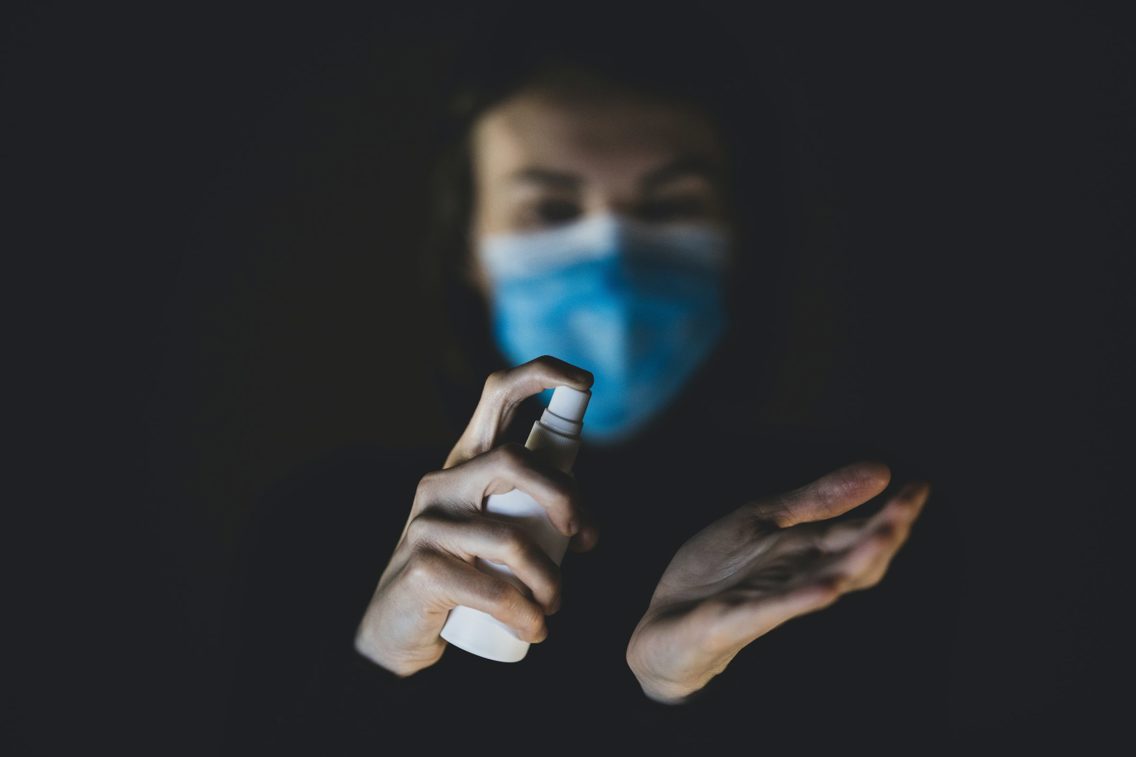The Rise of the Counterfeit Industry
-
Sist oppdatert
10. september 2020
-
Kategori
-
Tema
- Corona
- Covid-19
- Fake products
Covid-19 victims are just new profitable segments for a global, undetectable counterfeit industry. Most governments are ill-prepared to fight back.
KNOWLEDGE & KRISTIANIA: The Counterfeit Industry
There is a “Perfect Storm” between two global destructive forces right now – the counterfeit industry and the Covid-19 pandemic. Both are highly undetectable, the fake products hidden in the grey and black markets, and the invisible virus.
Amid the Covid-19 pandemic, the Chinese companies sold thousands of fake testing kits and medical masks authorities in Spain, Turkey and the Netherlands. Investigations by Interpol revealed that 2,000 online “pharmacies” sold fake equipment and medicine directed towards the victims of Covid-19.
- Read also: Korona-profitørene (in Norwegian)
Invisible enemies
The counterfeit medicine industry did not start now. The production of fake medicine is a major growing global industry. And just like Covid-19, – it is an invisible enemy difficult and costly to detect. It is hidden behind global and complex supply chains.
The criminal entrepreneurs producing fake products are not the beach shops on a tourist destination that we perhaps think of. This is an industry that have top know-how of designing and production of counterfeiting products through reverse engineering, 3D-printing, logistics systems that can reach every state in the US and sometimes bitcoin payment technology.
The Independent revealed March 25th, 2020 that the same producers of fake products with Ralph Lauren or Gucci labels are now producing masks labeled 3M with CE certification. During the pandemic, this is a dance between the devilish Covid-19 and the darkest online pharmacies, – and they meet only three clicks from your computer right now.
- Read also: Når kommunikasjon kan redde liv (in Norwegian)
Haven of fake medicine
The pandemic burns like a wildfire away from the well-organized western health systems into densely populated countries in the third world. Here, the global counterfeits medicine industry thrives and grow underneath fragile and corrupt governments, dysfunctional health systems and ineffective control.
According to a report from the World Health Organization in 2017, fake malaria medication causes between 72,000-267,000 fatalities each year in Sub-Sahara. Center for Decease Control (CDC) have for a long time warned against fake malaria medicine. But the criminal entrepreneurs know exactly where the haven of fake medicine are, – it is in the third world.
- Read also: Hvordan kan vi unngå å kjøpe falskt medisinsk utstyr? (in Norwegian)
The Perfect Storm
Under the protective umbrella of an ill organized and dysfunctional health system, the peoples only hope against Covid-19 is Malaria medicine. The Hydroxychloroquine has a long history of counterfeits in the third world already.
People that want to be prepared for the Covid-19 epidemic therefore turns to the grey medicine markets for help. But they are already caught in the perfect storm between the criminal supply chains and the pandemic. Many will probably buy a fake “lemon” product that in best case have no active ingredients and therefore does nothing harm. Worst case though, fake medicine may include rat poison or lead.
An article by Camille Malplat, April 1, 2020 first in The Jakarta Post, indicates that the perfect storm is about to arrive in the third world: “The chloroquine craze is not just affecting the black market for drugs — it is also spurring the production of counterfeit medications. Cameroon’s government has already issued a warning about fake chloroquine, samples of which have surfaced in health centers.”
Counterfeit medicine is big business
Ordinary people going for a beach vacation probably meet the counterfeits Armani T-Shirts along the boardwalk shops. It looks like a trivial problem. But Brechtelsbauer and his colleagues found in a published paper in 2016 that between 35,000-50,000 online pharmacies, and 96 percent of these companies did not comply with patient protection regulations. These are the primary outlets for counterfeit medicine.
A government report from the US Government Accountability Office (2018) found that 40 percent of products sold from well-known webpages were fake. Another recent report from Stroppa, Gatto, Pasha, and Parrella, (2019) found that more than 50,000 Instagram accounts promoted counterfeits, – a 171 percent increase since 2016.
This is big business. An investigation from Frontier Economics (2017) estimated the industry to a 1 trillion $ business. This is a dynamic and flexible industry quick to respond to new upcoming demand in the market. For them, it is a perfect time for Covid-19.
Dancing with the devil
The legendary politician and corporate icon Bob McNamara called it “Fog of War” when leaders had to make decisions under extreme uncertainty.
Covid-19 has the war-like similarities. Governments are forced to take quick decisions where the lack of valid information is extreme, and the consequences might be fatal. The pandemic reflects how vulnerable governments are when global supply chains dominate strategic resources for medicine and equipment.
This epidemic shows that they have been left with worst case alternatives; to dance with the devil in the international grey markets. When the supply chains are complex, and it is a long geographical and political distance – the fog of war worsen the quality of health decisions. Distance leads to less information and an even more lethal interaction effect between Covid-19 and fake health products.
Ill-prepared governments
Most governments are ill-prepared for this storm. In spite of the fact that scientists for a long time have warned us. Is this a Pearl Harbor or 9.11 situation where politics are taken by surprise? No, it is not!
It is the same criminal industry and the same mechanisms of unaware customers that have driven the other epidemic for years, – the Opioid-crises that killed 67,000 people in the US in 2018. Fake medicine containing the lethal ingredient Fentanyl flows into the grey markets world-wide. It is a global epidemic driven by the fake medicine industry.
Covid-19 victims are just new profitable segments for the same industry. They scale up their global supply chains to cover the world demand for fake Hydroxychloroquine, protection gear, 3M masks and test kits. They are the global experts of counterfeiting production, stealing property rights and organize their global supply chains to meet uninformed customers.
Deadly interaction
Luck should not define consequences of the deadly interaction between pandemics and markets for fake products. Or as the polar explorer Roald Amundsen put it; “victory awaits him who has everything in order, luck, people call it. Defeat is certain for him who has neglected to take the necessary precautions in time, this is called bad luck.” To base global health precautions on luck, like we now do, – should be contrary to health politics.
We will keep losing against the intertwined vicious forces of the Covid-19 pandemic and the fake medicine. The parasite business of fake medicine should have been taken more seriously a long time ago. Because in a war like this, – victory awaits only those who has “everything in order.”
What we can hope for
So, precautions are precious gifts during crises. One of them are technology that can track down origin, share real-time information with customers, and control real quality.
The food chains are already well prepared. Walmart together with IBM have applied blockchain technology that reduced the time to trace an item from the store to the farm from seven days to just 2.2 seconds. Similar technologies are weapons to trace down and catch copies, counterfeits and fake medicine and equipment.
Preparedness through tracking technology should probably add to the crises supply resources. Especially during crises, – it is most important to track down the origin of medicine and health products like protection gear.
During the Covid-19 crises this is a global problem. We need a system that can save time, – and time is a very scarce resource during a pandemic.
References:
- Daragahi, B., Total disregard for people’s lives’: Hundreds of thousands of fake masks flooding markets as coronavirus depletes world supplies, in The Independent. 2020: UK.
- World Health Organization: Achieving and maintaining universal coverage with long-lasting insecticidal nets for malaria control. 2017.
- Center for Disease Control and Prevention, C. Counterfeit and Substandard Antima-larial Drugs. 2020 [cited 2020 April 11]; Available from: https://www.cdc.gov/malaria/malaria_worldwide/reduction/counterfeit.html.
- Malplat, C., Africans rush for chloroquine as virus tsunami looms|, in The Jakarta Post. 2020.
- Brechtelsbauer, E.D., et al., Review of the 2015 Drug Supply Chain Security Act. Hospital pharmacy, 2016. 51(6): p. 493-500.
- Office, U.S.G.A., Report to the Chairman, Committee on Finance, U.S. Senate, Intellectual Property. Agencies Can Improve Ef-forts to Address Risks Posed by Changing Counterfeits Market. 2018.
- Stroppa, A., Gatto D., Pasha L., B. Parrella, Instagram and counterfeiting in 2019: new features, old problems, in Ghost Data. 2019: Rome, New York.
- Economics, F., The economic impacts of counterfeiting and piracy, R.p.f.B.a. INTA, Editor. 2017.
- Center for Disease Control and Prevention, C. Opioid Overdose. 2018 [cited 2020 April 11]; Available from: https://www.cdc.gov/drugoverdose/.
This article is written for Kunnskapsmagasinet Kristiania (Kristiania Knowledge Magazine) and first published on 10 September 2020.
Text: Professor Arne Nygaard, Department of Marketing at Kristiania University College and Professor Ragnhild Silkoset, Department of Marketing at BI Norwegian Business School.
Photo: The counterfeit industry is big business. Illustration photo of girl with a mask. Photo by engin akyurt on Unsplash.

